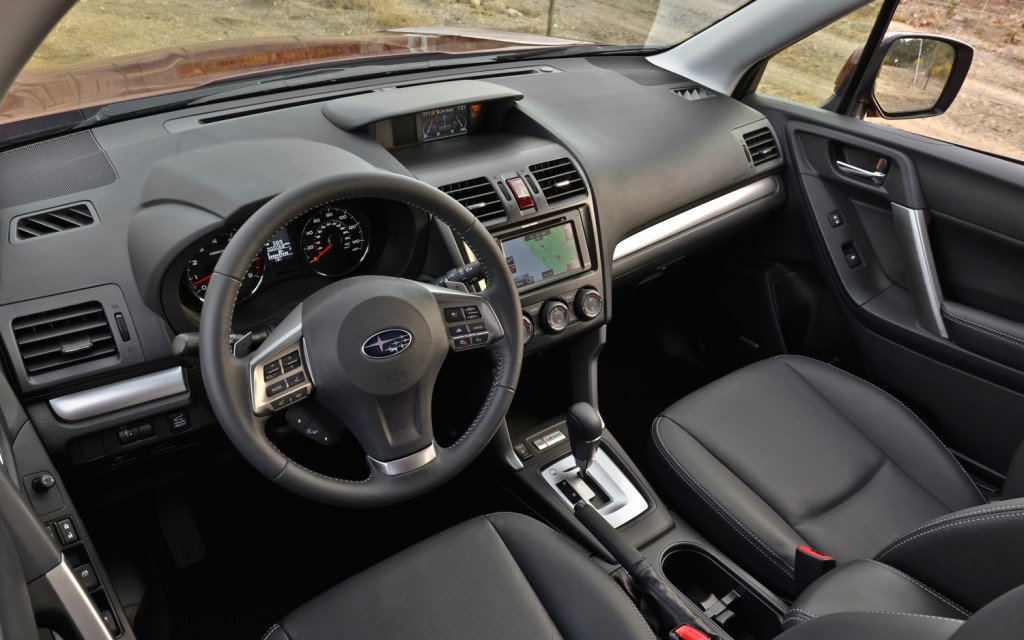Interior
An area Subaru has failed in for many years is interior design and refinement. I’ve never found much issue with it, as my family owns its second Outback wagon. However, other editors at Cars.com find fault with the quality of glossy plastics and hard dashboards.
Even they should be impressed with the new Forester’s cabin. The dashboard’s design is simple and has just a few pieces of the silver plastic many despise. The gauges are traditionally laid out; there are large buttons and knobs for the standard stereo and climate controls, and even the dashboard materials are softer to the touch than before.
On all but the base models there is a new digital screen at the top center of the dashboard to display mileage and other data. It’s also where the backup camera image is displayed. The camera is standard in all but base models, as well.
Drivers and front passengers will appreciate the front seats. The optional leather seats I tested throughout my six-hour drive were incredibly comfortable. I routinely get a sore back after an hour-plus in many test cars, so the pain-free day stood out.
I also sat in a Forester outfitted with cloth seats, which are standard. They were definitely firmer but were still nice and wide across the seat’s back and bottom.
Rear-seat room is plentiful. Subaru increased interior dimensions fractionally throughout the Forester and added more front seat travel. The result is a rear seat that left me — at 5 feet 10 inches — with inches of knee room behind the driver’s seat adjusted for my frame.
Cargo
At 34.4 cubic feet, the cargo area barely tops the CX-5 and Escape at 34.1 and 34.3 cubic feet, respectively, but the Forester falls behind CR-V and RAV4 at 37.2 and 38.4 cubic feet, respectively. Forester models with the panoramic moonroof lose roughly 3 cubic feet, as well.
Fold the rear seats and the maximum cargo area is 74.7 cubic feet, which bests the class. At 73.4 cubic feet, the RAV4 comes closest to the Forester’s max cargo space. Again, the moonroof cuts into that by almost 6 cubic feet. Of course, these losses come at the highest point of the vehicle’s interior, so the Forester’s wide cargo opening and relatively flat floor will still be a bonus in a majority of cargo situations.
The rear seats fold easily, either by the knobs at the top of the seatbacks or by optional buttons placed in the rear cargo area. When the seats are folded, there is a hump covered by a hefty piece of carpeted plastic, so the floor isn’t entirely flat.



